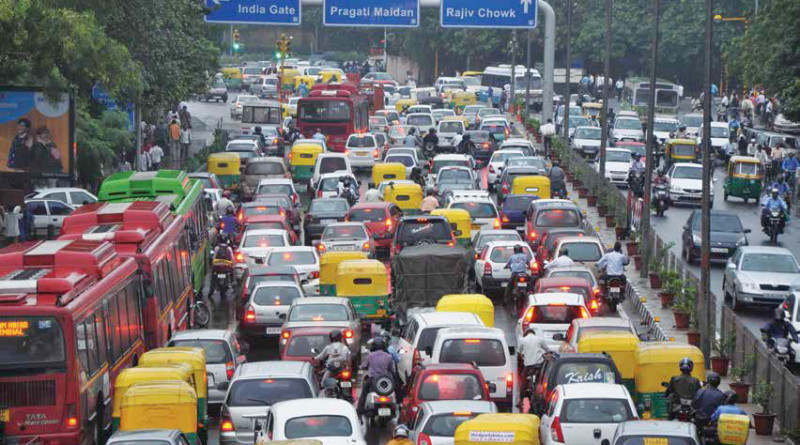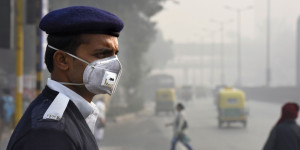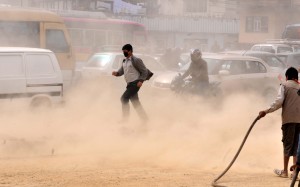No Air to Breathe
India is at the bottom of the charts at the global level when it comes to clean, safe air. Air pollution has been found to be the leading cause of mortality and disability in the country with both household and ambient air pollution contributing to burden of disease
By Team Double Helical
Environment is the most important social determinant of health, causing morbidity and mortality in a given population. The WHO’s comprehensive global assessment of the burden of disease from environmental risks reveals that globally, an estimated 24% of the burden of disease and 23% of all deaths can be attributed to environmental factors.
Further, globally, non-communicable diseases (NCDs), attributable to air pollution, amount to 8.2 million of the total 12.6 million deaths. NCDs such as cardiovascular diseases including stroke, cancers and chronic respiratory disease, now claim nearly two-thirds of the total deaths caused by unhealthy environments.
The Global Burden of Disease (2010) data showed that household air pollution was ranked at the 3rd position and ambient air pollution at the 9th position among the leading risk factors that contribute to morbidity and Disability Adjusted Life Years (DALYs). Household and ambient air pollution are the leading risk factors contributing to burden of disease in India. Household air pollution contributed to nearly 3.5 million deaths and a loss of 3.5% DALYs globally. Ambient air pollution contributed to another 3.1 million deaths and 3.1% DALYs. The ambient ozone pollution had a lower effect than the above and led to 0.2 million deaths and 0.2% DALYs in 2010.
Cognizant of the fact that air pollution needs to be addressed in right earnest, a Steering Committee was constituted by the Ministry of Health & Family Welfare (MoHFW), government of India in 2014, with members drawn from both health and non-health sectors. The report of this Committee, released in December 2015, has been able to shift the historical ‘urban air pollution centric focus’ to the ‘burning of biomass fuel across rural and periurban pockets in India’.
According to the Institute of Health Metrics and Evaluation (IHME), air pollution was found to be the leading cause of mortality and disability in India. In Indian settings, there is need for reducing sources of emissions, improving access to clean fuel and raising public awareness on health effects of air pollution.
Major risk factors are Household and ambient air pollution contributing to burden of disease in India.
Household Air Pollution (HAP)
It is caused by the use of solid fuels like wood, charcoal, coal, dung, crop wastes by over 3 billion people for cooking at home. These inefficient cooking methods lead to indoor air pollution especially in houses that are poorly ventilated. Indoor air Pollution leads to not only health effects but also has adverse social and environmental effects.
Household Energy and Poverty
Poor households are unable to afford LPG and other cleaner fuels and reliance on inefficient fuels reduces the time they could spare for income generating activities and education. It gives rise to a vicious cycle of poverty leading to use of inefficient fuels.
Gender issues
In most of the cases, women carry out the household chores and hence are the major sufferers of indoor air pollution.
Environmental impact and climate change
The reliance on wood for fuel leads to deforestation and consequent loss of habitat and diversity. The simple biomass and other fuels are inefficient and incomplete combustion takes place. The pollutants like black carbon and methane that are produced as a result of incomplete combustion leads to climate change.
Major health effects of Indoor Air Pollution
Acute lower respiratory infections, chronic obstructive pulmonary disease, lung cancer, cardiovascular disease, and burns.
Other health outcomes
There is emerging evidence which suggests that household air pollution in developing countries may also increase the risk conditions such as low birth weight and perinatal mortality (still births and deaths in the first week of life), asthma, otitis media (middle ear infection) and other acute upper respiratory infections, tuberculosis, nasopharyngeal cancer, laryngeal cancer and cervical cancer. Considerable evidence suggests that exposure to air pollution leads to adverse respiratory outcomes. Perinatal exposure to air pollution can impair organogenesis and can lead to long term complications. Exposure to air pollution during pregnancy has also been linked to decreased lung function in infancy and childhood, increased respiratory symptoms, and the development of childhood asthma.
The WHO’s Ambient Air Pollution database for 2016, shows the levels of PM10 and PM 2.5 in Delhi way above the normal levels. The annual PM10 level was found to be 229μg/m3 and that of PM 2.5 was found to be 112 μg/m3.
India is at the bottom of the charts when it comes to clean, safe air. Out of 132 countries assessed by Yale and Columbia, India ranked last, indicating that they have the world’s most polluted air. The worst forms of air pollutions are often found in Indian cities. Particulate matter (PM), one of the most widely monitored pollutants in India, is the main cause of the increasing air pollution in this South Asian subcontinent. The particulate matter build up can reach as high as five times above the safety limits for some cities in India. This creates a major health concern for the people living and breathing in the polluted air every day.
The National Air Quality Monitoring Program claims that nearly half of the Indian cities monitored have reached critical levels of particulate matter. There are sixty-three cities with critical levels, thirty-six cities with high levels, and nineteen cities at moderate levels. In 2007, only three out of 121 cities in India that had been analyzed were considered at low pollution level. These cities were Dewas, Tirupati, and Kozhikode. Northern India has been known to have increasing air pollution while southern India has shown the opposite trend. Indoor pollution also plays a big role in the overall status of India’s polluted air. The average Indian household particulate matter pollution is 350 micrograms per meter cubed, which is ten times greater than the limit set by United States Environment Protection Agency. In conclusion, some air in rural homes are even worse than the outdoors air of India.
In a study conducted at Department of Community Medicine, Maulana Azad Medical College, New Delhi, in 2016 in which a total of 3019 individuals were screened through spirometry, nearly 34.35% were found to have lung impairment. Almost 32.5% of the individuals screened were from the age group of 41-50 years. More than half of the subjects (57.6%) were living in Delhi for more than 20 years.




